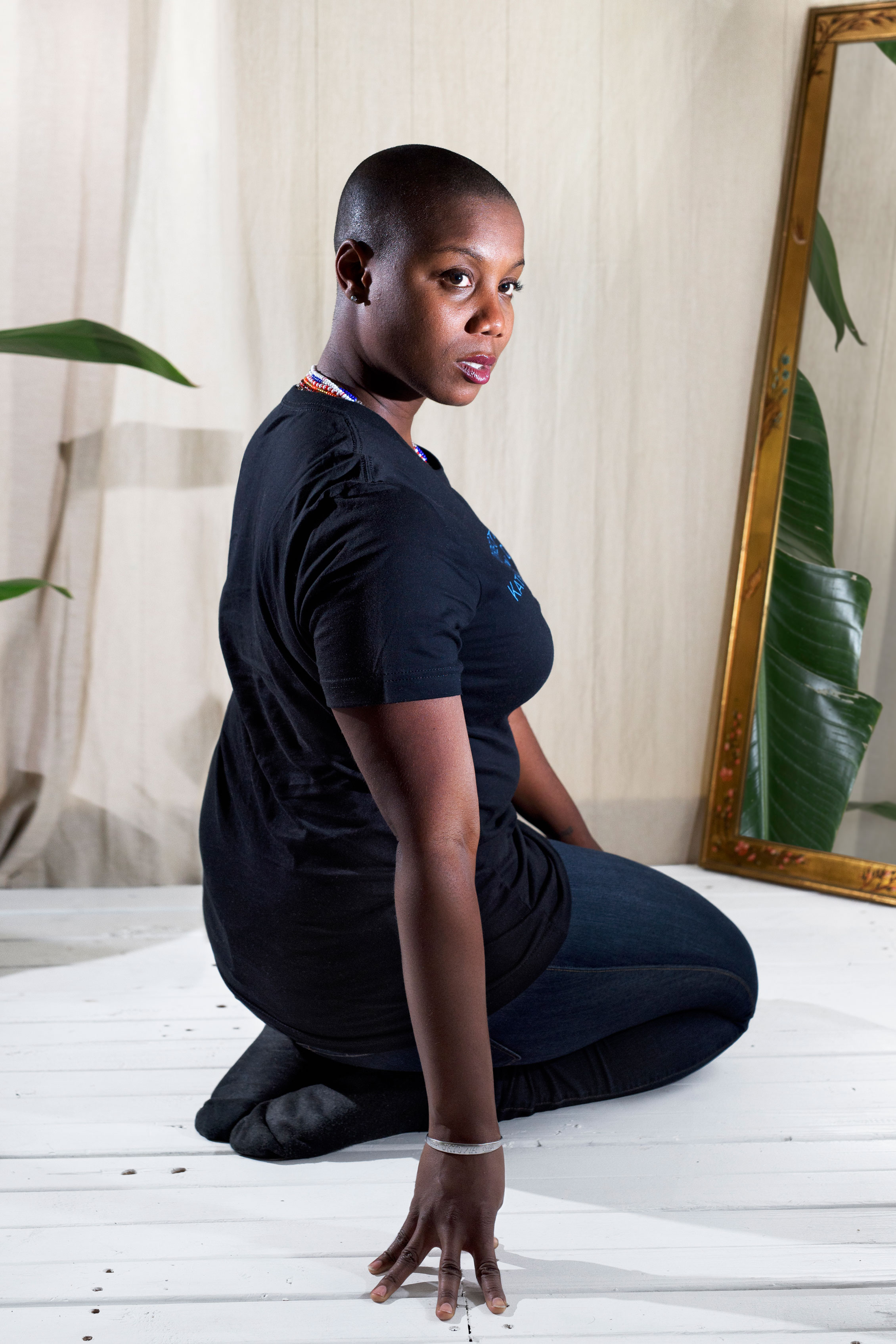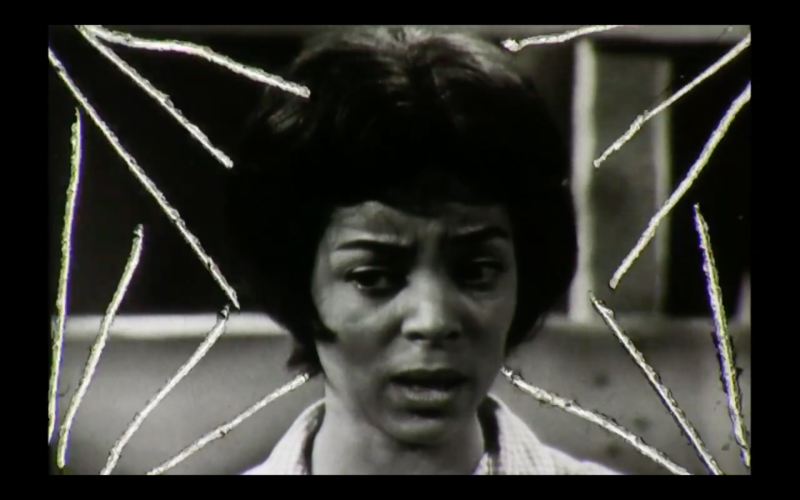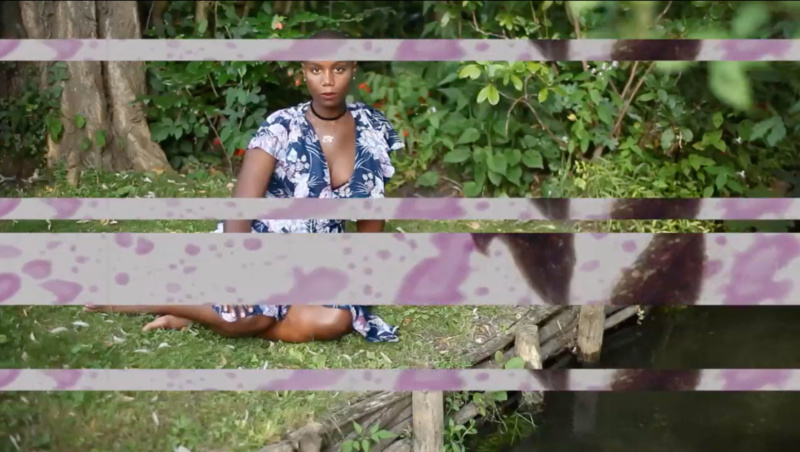
When I ask artist and filmmaker Ja’Tovia Gary what films or filmmakers touched her as a child, my research already tells me it’s people like Shola Lynch, Julie Dash and Ava DuVernay. The Dallas native starts to recount cinematic memories she shared with her father over the phone.
“I remember our dad showing us Spike Lee’s Mo’ Better Blues, when I was like nine. It’s talking about intimate relationships, there’s cursing, there’s sex scenes. I remember being taken by the music performances and the colors on screen. He’s casting people in purples and blues and reds. I didn’t have any language for all that, but I remember thinking these people look really good, this is the place I want to live.”
Gary, 34, a current Radcliffe Fellow at Harvard University, now has that language, and lures viewers into her cinematic universe of found footage, Black icons and an abounding psychedelic aesthetic that grips. In her film, An Ecstatic Experience (2015), vibrant color splatters wash over black and white footage of Ruby Dee, who is re-enacting a dramatized performance based on Fannie Moore, a former slave. The film mesmerizes with its hypnotic animation and Dee’s impassioned storytelling. “I wanted people to feel an out-of-body experience,” Gary explains. “I liken it to the Holy Ghost. In the church you feel it, like when the temperature in the room shifts, they’re singing, the drums are hitting, and the choir is working things up, and you feel this kind of quickening in your body, but also in the space.”

A similar spirit pulls in Cakes Da Killa: NO HOMO (2013), Gary’s electrifying mini-doc about then-underground, queer rapper now turned legend-in-the-making Cakes Da Killa, a.k.a Rashard Bradshaw. Gary and Bradshaw met through Tumblr, Gary asked to collaborate, and their director/subject chemistry instantly translated organically onscreen. Bradshaw’s vulnerabilities and lyrical ferociousness come alive. “What really makes our collaborations work is trust,” he shares. “I can trust Ja’Tovia to let me do me. It’s also always a blessing to work with another Black artist to tell our stories because the message doesn’t get too misinterpreted.”
Shuttling between Brooklyn and Cambridge, the former actress and voice-over artist is at work on her debut feature-length documentary, The Evidence of Things Not Seen, for which she is interviewing family members, friends and former lovers. “It’s a self-portrait in many ways, but it’s a self-portrait via the people closest to me,” she explains. Gary began around 2013–14, but the project’s genesis was an undergrad film, Deconstructing Your Mother, where Gary told her mother’s backstory. “When I got to grad school I was really inspired to think about how I can continue with this impulse to investigate myself and the people closest to me. So, I’m really interested to have a Black woman self-actualize—what does that look like? Are we trapped in these cycles? If my mom and dad behaved a certain way am I prone to this behavior as well?”
“Ja’Tovia Gary takes the forceful and distressed politics of this moment and makes them shine through film, speech music and the diary of inner voices. She takes history and conflict and revelation and winds them into one another to create something new and strong,” says Peter L. Galison, the current co-director of the Film Study Center at Harvard. “She’s an artist of creative resistance—just what we need.” Gary executes this masterfully with Giverny I (Négresse Impériale) (2017), pairing two contrasting realities: herself in a pastoral landscape at Monet’s country home and Diamond Reynolds’ Facebook livestream of her fiancée Philando Castile’s murder.

“I was at a residency in Giverny when the murders of Philando Castile, Alton Sterling and the shooting at the Pulse nightclub in Orlando, Florida happened. I’m in this garden in northern France, in the lap of fucking luxury, losing it a little, no shade. I’m the only Black person there. I was feeling my own body’s vulnerability. When people ask me what this is about, I say it’s about Black women’s bodily integrity, or the lack thereof.”
Gary, a southerner with degrees from Brooklyn College and the School of Visual Arts, is a self-described “fallen debutante,” who was born and raised in Texas, but came of age in New York City, helping, in 2013, to found the New Negress Film Society, a collective of Black women filmmakers uplifting Black female narratives. Her work is included in the Whitney Museum’s permanent collection and last year was part of “On Whiteness” curated by Claudia Rankine at the Kitchen and “Four” at We Buy Gold, a roving NYC-based art space founded by Joeonna Bellorado-Samuels. Gary also had her first solo show “A Care Ethic” at UC Santa Barbara’s Art, Design and Architecture Museum last year, before starting off 2019 in the Hilton Als curated group exhibit, “God Made My Face: A Collective Portrait of James Baldwin,” at David Zwirner, presenting her first solo exhibition in Paris at Galerie Frank Elbaz and receiving a Creative Capital grant. Gary’s avantgarde films are chilling, enthralling and seductive—it’s impossible to view the world the same after witnessing her cinematic gems.




